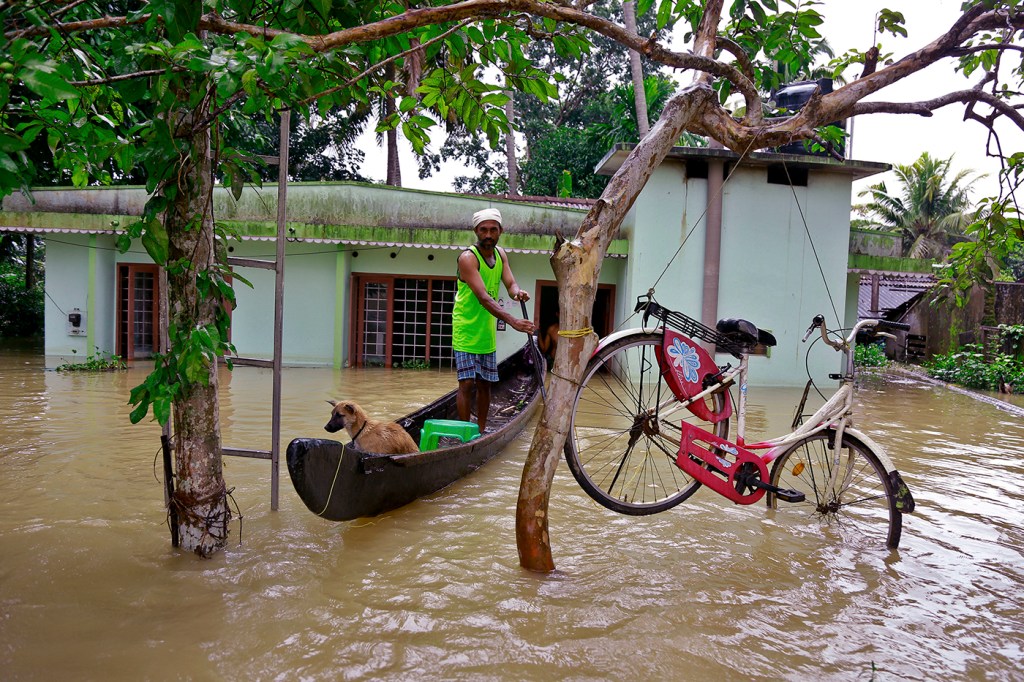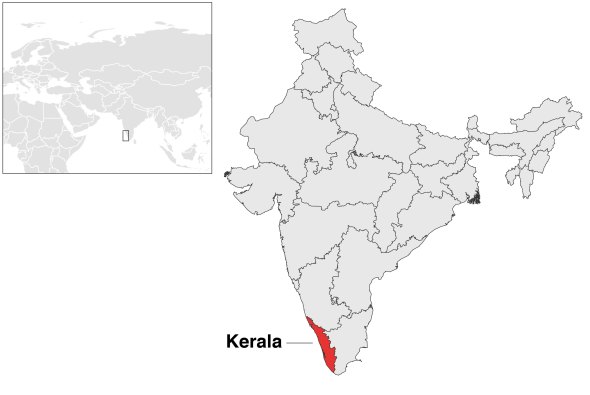Severe floods devastated southwestern India. And it’s not just because of the monsoons.

Floods in southwestern India have killed more than 350 people and stranded thousands since the monsoon season arrived earlier this summer. But the heavy rainfall only contributed to the much larger cause of this disaster, according to Auroop Ganguly, a civil and environmental engineering professor at Northeastern who studies extreme weather trends.

Ganguly, director of Northeastern’s Sustainability and Data Sciences Laboratory, said the severe flooding can be attributed to human error and man-made changes to the local environment.
Flooding is worst in the coastal state of Kerala, where poorly-managed dams exaggerated the effects of the heavy rainfall, he said.
“Kerala has actually been in a drought, so [the state] was unsure when to release the water in the dams because there was a chance the monsoon rains wouldn’t bring that much water,” said Ganguly, who led students to Kerala to study climate change and environmental policy in 2014 and 2015.
We need to preserve critical ecological areas if we want to save lives. Natural disasters are not acts of god. They are acts of mankind.
Auroop Ganguly, Civil and Environmental Engineering Professor
Ganguly said unreliable forecasting led to the misuse of the dams. “It’s a gamble deciding when to release the water,” he said. “You need to be able to trust the forecast, and if you can’t, it’s useless.”
But questionable forecasting isn’t the only factor contributing to these floods, he said. According to Ganguly, reckless environmental practices in Kerala also allowed this catastrophe to unravel.
“There is uncontrolled development and a complete disregard for the ecology,” Ganguly said. “They have destroyed parts of the environment that naturally mitigate floods, like forests.”
Forests help prevent floods because tree roots absorb water and keep soil intact, which reduces the the likelihood of a landslide. According to one study, there is a direct correlation between forest density and flooding in India.
Ganguly cited ecologist Madhav Gadgil, who said that construction projects in Kerala made the landscape especially susceptible to flooding.

“The flooding has definitely brought to light the existence of illegal stone quarries and a large number of unauthorised constructions on river beds,” said Gadgil, who founded the Centre for Ecological Sciences in India. “In this sense it is definitely a man-made calamity where intense rainfall and human intervention have made it a serious disaster.”
Ganguly said the population of Kerala is one of the wealthiest and most educated in India, proving that natural disasters don’t discriminate by affluence.
“Kerala has one of the highest literacy rates in the country, and it’s one of the richest states, but somehow this doesn’t percolate when it comes to protecting the ecology,” he said. “Money is spent to fix something after it happens, but not to create the infrastructure to prevent it.”
Ganguly said forecast technology, such as satellites, needs to be improved to help communities better prepare for extreme weather and avoid future environmental disasters.
“We need to preserve critical ecological areas if we want to save lives,” he said. “Natural disasters are not acts of god. They are acts of mankind.”





